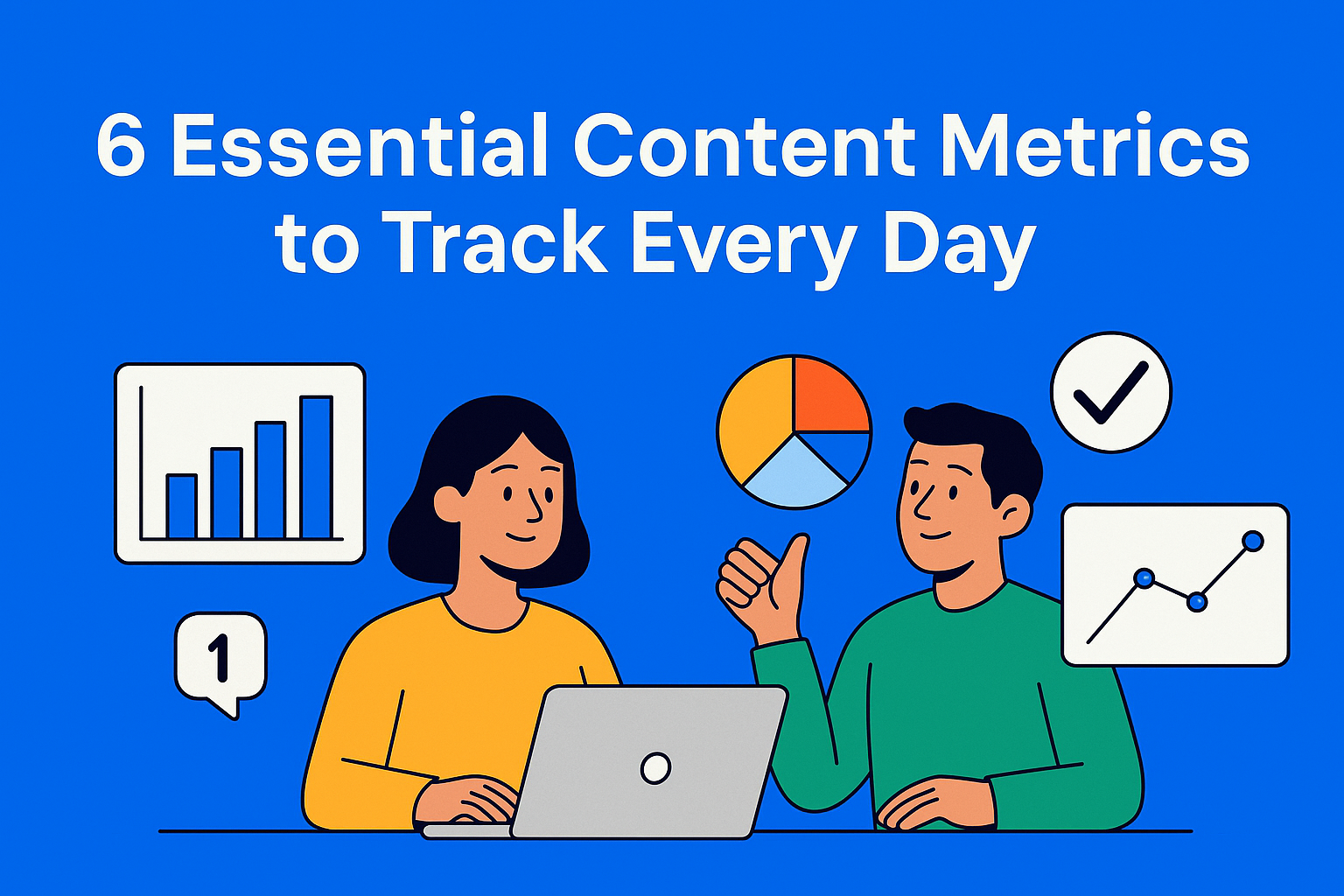The Evolution of Content Management: What Will Shape 2025?
Discover how content management is evolving in 2025 - AI automation, headless CMS, omnichannel delivery, and smarter workflows. Learn what digital marketers and content teams need to stay ahead in a fast-changing landscape.

Let’s be honest-content management isn’t what it used to be. The days of simply writing a blog, publishing it on your site, and calling it a day are gone. In 2025, content management is fast, data-driven, automated, and tailored for dozens of platforms at once. For content teams, content managers, and digital marketers, it’s no longer just about creating quality content-it’s about organizing it efficiently and intelligently.
In this blog, we dive into the major changes shaping how we work with content, which trends you shouldn’t ignore, and how smart tools can help you stay ahead of the competition.
Key Takeaways
- Content management has evolved into a blend of strategy, collaboration, automation, and analytics-simple CMS systems no longer cut it.
- AI and automation streamline content creation, approvals, and optimization-saving time and boosting output quality.
- Headless CMS and omnichannel distribution are essential to reach modern audiences across platforms efficiently.
- Personalization and performance tracking are no longer optional-data-driven strategy and adaptive content are must-haves.
- Teams need secure, compliant, and collaborative tools to thrive in remote-first, multi-stakeholder environments.
From Static to Smart: How Content Management Has Matured
Content used to be something you created and uploaded. Today, it’s part of a complex ecosystem. Teams work from different time zones, audiences are scattered across platforms, and everyone expects speed, relevance, and style.
Modern content management looks more like a combination of project management, editorial strategy, and analytics-all in one. It’s about flexibility, consistency, and collaboration.
This shift is pushing teams to move away from classic CMS tools and toward platforms that offer better workflow visibility, automation, and integration. Because let’s be real-juggling Trello boards and ten Google Docs doesn’t scale.
AI and Automation: Content’s New Best Friends
AI isn’t here to take your job-it’s here to give you your time back. If you’re still writing meta descriptions manually or chasing approvals, you’re wasting precious hours.
Content automation is essential today. With AI, teams can:
- Generate first drafts or outlines to kickstart writing
- Automate approval workflows (no more "just bumping this email" messages)
- Optimize headlines, CTAs, and tone based on engagement data
These things change the game when managing content at scale.
Omnichannel and Headless CMS: Publish Everywhere (Without Losing Your Mind)
People don’t just read blogs-they scroll LinkedIn, skim through emails, tap through Instagram carousels, and ask Alexa for info. Your content needs to live on all these platforms and make sense everywhere.
That’s why brands are switching to headless CMS systems. They separate content from presentation, so you can write once and distribute to web, mobile apps, social media, emails-whatever you need.
What does this mean for content teams? You need:
- Clean, reusable content blocks
- Centralized control over brand messaging
- The ability to quickly adapt formats
This is where platforms like EasyContent can be useful. They help organize and distribute content across multiple channels from one central place.
Personalization and Performance: One Size No Longer Fits All
Today’s users expect content that feels like it was made just for them. Whether it’s a personalized email or a dynamic homepage message, relevance is everything.
Thanks to AI and data tracking, you can now:
- Show different content to new and returning visitors
- Tailor recommendations based on previous behavior
- Adjust headlines and layouts based on engagement
But personalization adds complexity. You’re no longer managing just one blog-you’ve got ten variations. That’s why it’s crucial to have a tool that can manage those workflows without chaos.
Data-Driven Strategy: Less Guessing, More Results
Going with your gut isn’t enough anymore. Every decision-from choosing a topic to scheduling a post-needs to be backed by data.
Smart teams use:
- Engagement metrics (time on page, scroll depth, bounce rate)
- SEO performance tracking
- Conversion data to evaluate content effectiveness
This helps determine what to refresh, what to promote, and what to eliminate.
Platforms that connect performance with planning, like EasyContent, allow easier optimization without jumping between multiple tools.
Compliance, Security, and Remote Collaboration: The New Standard
With stricter data laws (hello GDPR and AI regulations) and more teams working remotely, content management must be secure and structured.
Must-haves include:
- Role-based access
- Audit logs and approval records
- Encrypted, secure storage
And let’s not forget collaboration. Remote teamwork requires workflows that actually work-not just shared folders and Slack messages.
Final Word: What You Can Do Today
Here’s the truth: Content management in 2025 isn’t just about publishing-it’s about scaling, personalization, security, and analytics. It’s a serious strategic function, and your digital tools should reflect that.
To stay ahead, your team should:
- Embrace AI and automation to eliminate manual work
- Take content performance and analytics seriously
- Adopt an omnichannel approach with a headless system
- Maintain compliance and organization, especially in remote teams
And most importantly-centralize your workflow. Whether you’re part of a startup or a global marketing organization, a platform like EasyContent can tie everything together: collaboration, automation, approvals, storage, and insights-all in one place.
Because in 2025, creating great content is only half the job. Smart management is the other half.






